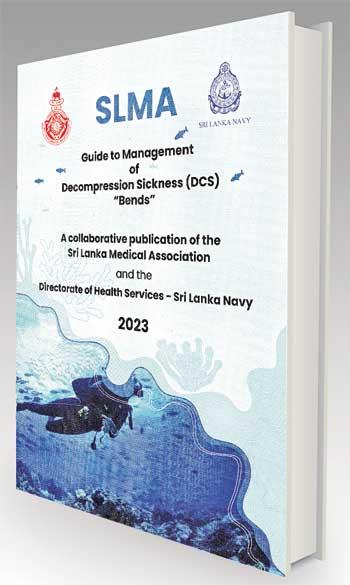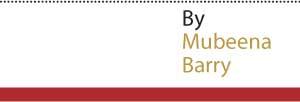Reply To:
Name - Reply Comment
Guide to Management of Decompression Sickness “Bends” is a collaborative publication of the Sri Lanka Medical Association (SLMA) and Directorate of Health Services – Sri Lanka Navy 2023. The launch of the book-which took place at SLMA on October 5-was aimed at spreading awareness in people of the consequences of diving in the wrong procedure was also followed with a discussion that took place amongst SLMA President Dr. Vinya Ariyaratne, Commander of the Sri Lanka Navy Vice Admiral UVMP Perera, Past President of the SLMA, Dr. Malik Fernando, Dr. Y.B. Weerasinghe and Dr. D.K. Ariyadewa.
Association (SLMA) and Directorate of Health Services – Sri Lanka Navy 2023. The launch of the book-which took place at SLMA on October 5-was aimed at spreading awareness in people of the consequences of diving in the wrong procedure was also followed with a discussion that took place amongst SLMA President Dr. Vinya Ariyaratne, Commander of the Sri Lanka Navy Vice Admiral UVMP Perera, Past President of the SLMA, Dr. Malik Fernando, Dr. Y.B. Weerasinghe and Dr. D.K. Ariyadewa.
The book states that occasionally victims of DSC with symptoms and signs of a spinal lesion may present themselves at tertiary care centres or to a private clinic or hospital without having undergone hyperbaric oxygen (HBO) treatment
“Decompression sickness commonly called “bends” is a condition seen in those who have breathed compressed air; air that is inhaled by individuals such as SCUBA divers for a prolonged period under high pressure and those who have rapidly ascended to atmospheric pressure too quickly. This happens when they don’t follow recommended diving protocols and come up to the surface atmospheric pressure too quickly after a prolonged stay at a great depth in water. The result is that there is no time for inert gases dissolved in the blood and tissues to be eliminated leading to bubbles of nitrogen being formed in the blood and tissues due to the rapid reduction of ambient pressure,” as mentioned in the book.
 During the discussion, Dr. Weerasinghe explained the types of sicknesses that come under the DCS along with their relevant symptoms “The symptoms of Decompression sickness usually appear between 4 – 6 hours. Still, it can appear from 1 hour to maybe 24 hours. These symptoms can lead to paralysis within minutes. There are two types of Decompression sickness: type 1 and type 2. Type 1 has minor symptoms where you have poor localized joint pains, skin rashes; cutis marmorata, itching and extreme fatigue. In DSC Type 2, which is the critical part of DSC, you can develop respiratory symptoms, Cardiovascular symptoms and neurological symptoms,” said Dr. Weerasinghe.
During the discussion, Dr. Weerasinghe explained the types of sicknesses that come under the DCS along with their relevant symptoms “The symptoms of Decompression sickness usually appear between 4 – 6 hours. Still, it can appear from 1 hour to maybe 24 hours. These symptoms can lead to paralysis within minutes. There are two types of Decompression sickness: type 1 and type 2. Type 1 has minor symptoms where you have poor localized joint pains, skin rashes; cutis marmorata, itching and extreme fatigue. In DSC Type 2, which is the critical part of DSC, you can develop respiratory symptoms, Cardiovascular symptoms and neurological symptoms,” said Dr. Weerasinghe.
The book states “Occasionally victims of DSC with symptoms and signs of a spinal lesion may present themselves at tertiary care centres or to a private clinic or hospital without having undergone hyperbaric oxygen (HBO) treatment. They may have resorted to ‘In–water recompression’ by spending extended periods of time at various depths in the sea in an effort to relieve symptoms – without complete recovery. Unless presentation is greatly delayed, such a patient should be referred to the Navy Hospital in Trincomalee for definitive HBO treatment.